Your Home's Best Defense: The Must-Have First Aid Kit Checklist
Posted by Ola Griffin on May 7th 2025
BEING PREPARED WITH FIRST AID SUPPLIES
No matter your stage of life—from busy young families to retirees enjoying a slower pace—a well-organized first aid kit is a household necessity. Scrapes, burns, allergic reactions, and everyday mishaps are far less stressful when you’re prepared. Having a kit that's stocked, accessible, and ready to use can make a critical difference when seconds count.
I highly recommend using the Silver/Clear Stand-Up Pouches from PackFreshUSA to organize your first aid supplies. Grouping items by category in these pouches keeps everything easy to find and neatly stored. For this project, the large and XL Stand-Up Silver Clear bags are my top choice.
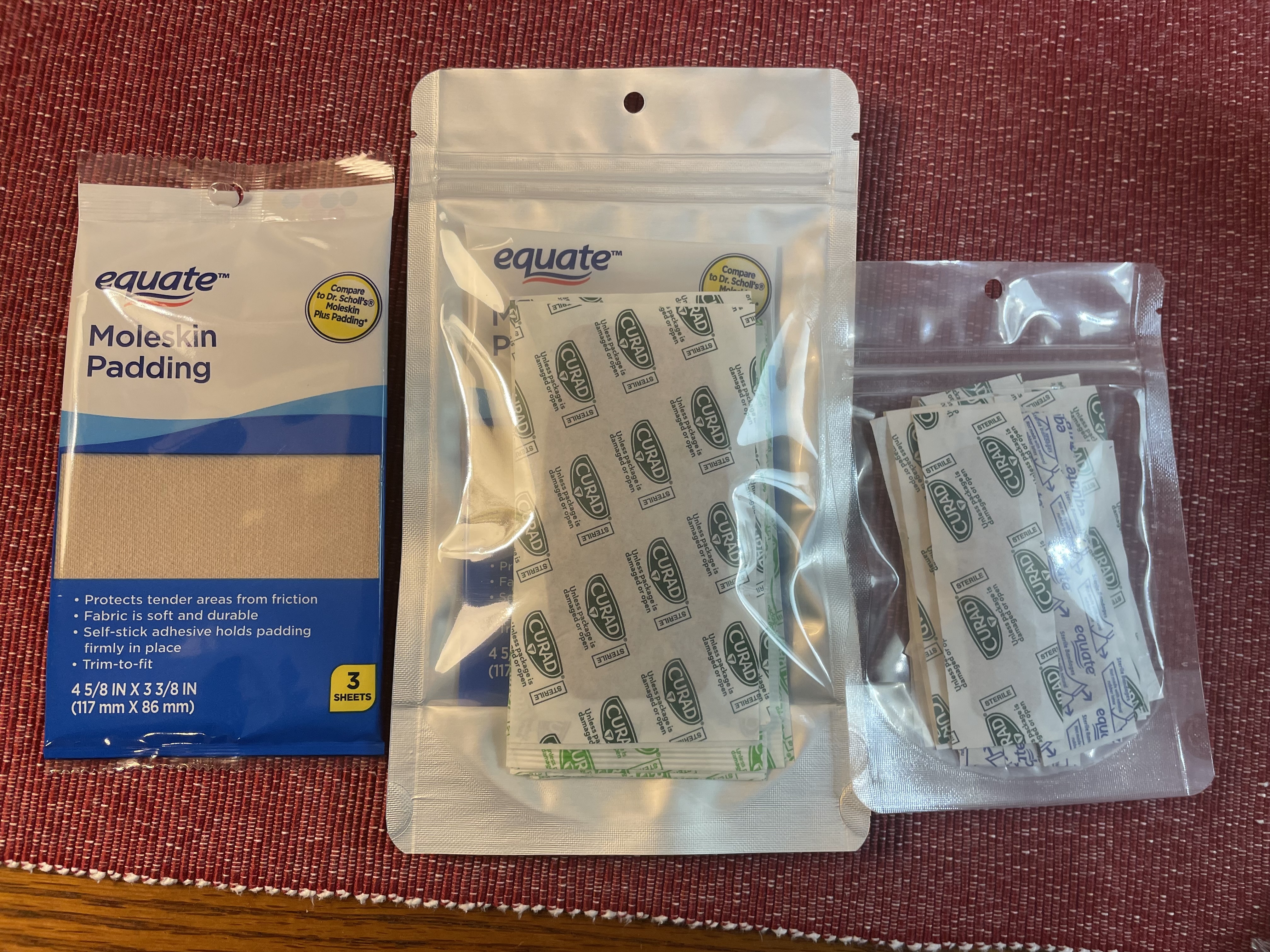
However, I also used the small size to organize smaller items like pills, bandages, and other small items making sure everything is labeled really well.
Let’s take a look at the essential items every home first aid kit should include.
Click here for the video link:
BANDAGES & DRESSING

When it comes to first aid essentials, controlling bleeding should be a top priority. That’s why a wide variety of bandages and dressings are a must for any home kit. Be sure to include:
- Adhesive bandages (assortment of sizes)
- Liquid Bandage
- Elastic Bandages
- Sterile Gauze (Rolls and pads in assortment of sizes)
- Wound Tape
- Moleskin (blisters, corns, or hotspots)
You may also want to expand your kit with additional support bandages, such as ACE-style wraps for knees, ankles, or wrists—especially helpful for managing sprains and strains. Another smart addition is BleedStop, a powder that can help stop bleeding within seconds. It’s particularly useful for anyone in your household who takes blood thinners, as even minor cuts can lead to significant bleeding.
OINTMENTS
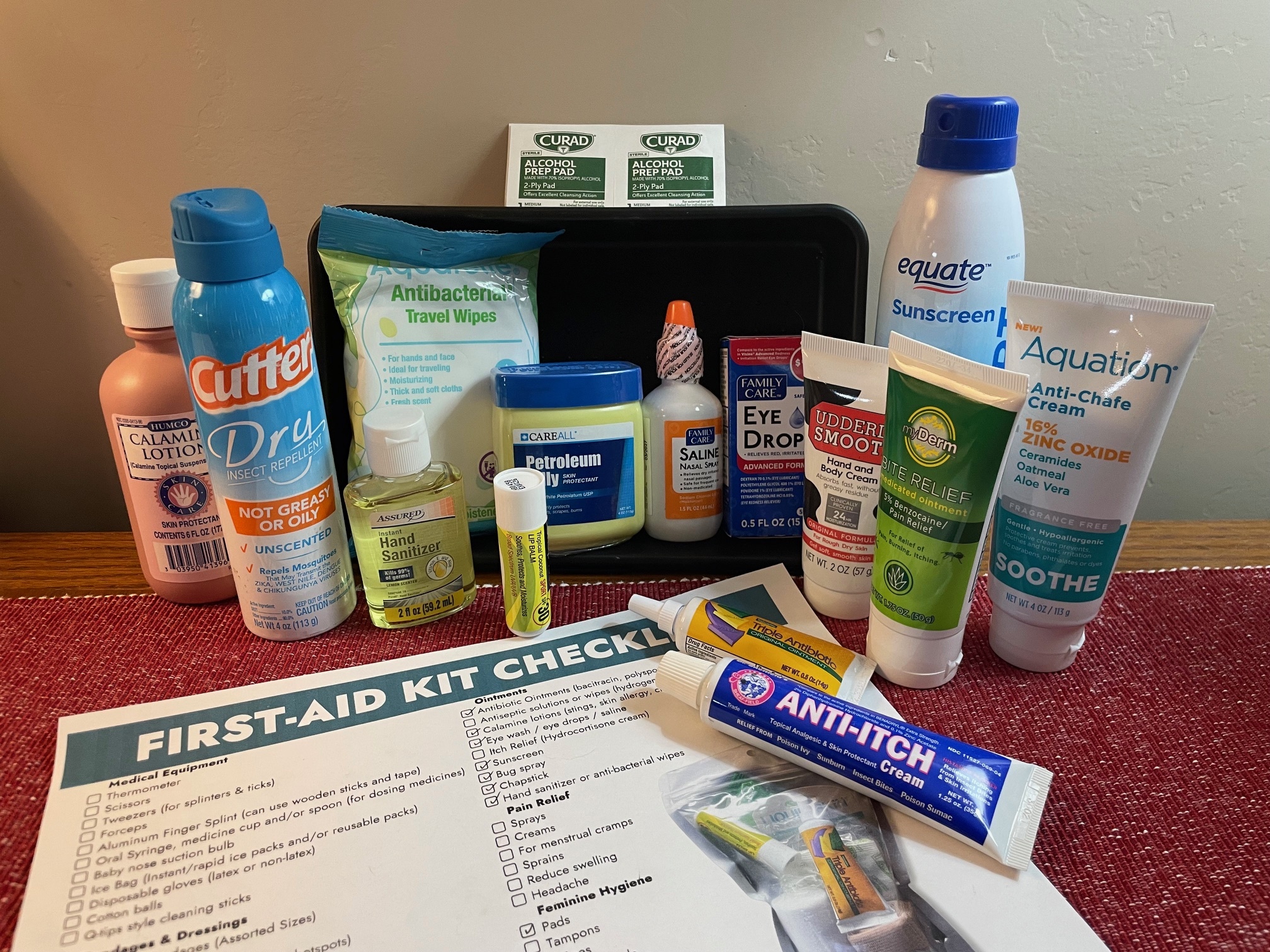
In addition to bandages, it’s important to stock your first aid kit with a variety of ointments and skin care essentials. These help treat everything from minor cuts and sprains to skin irritations and eye care needs. Be sure to include:
- Antibiotic Ointments (bacitracin, polysporin, or other ointments)
- Antiseptic Solutions or wipes (hydrogen peroxide)
- Calamine lotions (stings, skin allergy, chicken pox, measles, poison ivy)
- Eye wash / eye drops / salineItch Relief (hydrocortisone cream)
- Burn cream
- Sunscreen
- Bug spray
- Chapstick
- Hand Sanitizer or antibacterial wipes
Other helpful additional items:
- Petroleum jelly (for minor wounds and skin protection)
- Medical-grade honey (for promoting wound care and healing)
- Moisturizing lotion (to help with dry or irritated skin)
- Baby powder or anti-chafe cream (for chafing)
Having a well-rounded selection of ointments ensures you are prepared to treat a variety of minor injuries and skin issues both quickly and effectively.
PAIN RELIEF ESSENTIALS
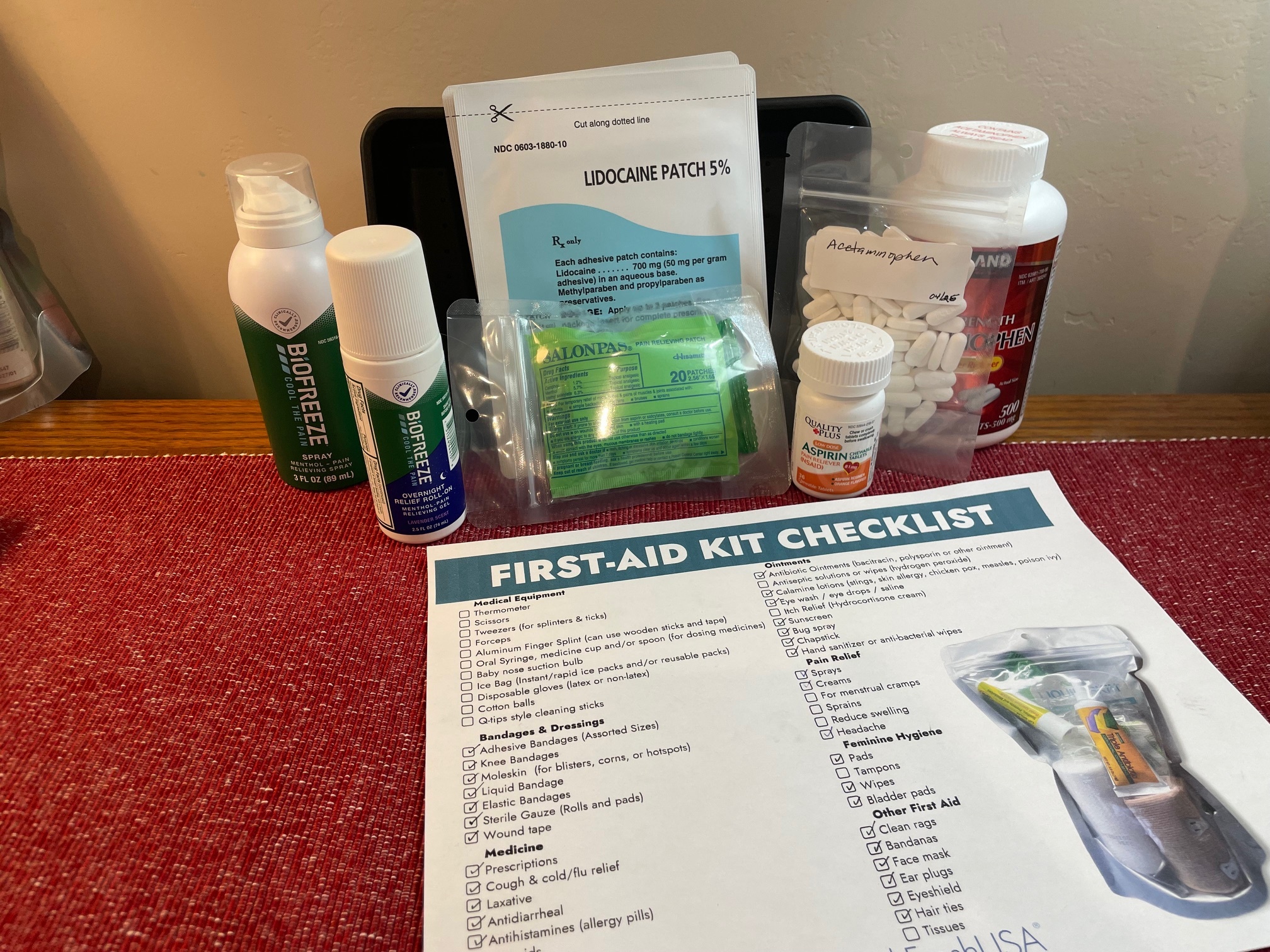
From headaches and sprains to fevers and general aches, having pain relief supplies on hand is a must. Be sure your first aid kit includes a variety of options to manage different types of discomfort, such as:
- Sprays (pain relief)
- Creams (topical with lidocaine)
- Menstrual cramps (pills)
- Sprains - (ointments with lidocaine, wraps)
- Reduce swelling (Motrin)
- Headache (acetaminophen)
Keeping an assortment of pain relief items well-stocked isn’t just a good idea—it’s essential for making sure you’re prepared for whatever minor injuries or illnesses come your way.
MEDICINE

Your first aid kit should go beyond just bandages and ointments—it’s important to keep both prescription medications and essential over-the-counter medicines easily accessible. Stock your kit with items to help manage common illnesses and unexpected issues, such as:
- Prescriptions medications (always keep an updated supply)
- Cough & Cold / Flu Relief medicines
- Laxative
- Anti-diarrheal (pills and/or liquid)
- Anti-histamines (allergy pills)
- Antacids (heartburn, reflux)
- Motion Sickness pills
- Vitamins (daily)
Bonus items to consider:
- Activated charcoal (helpful for certain types of food poisoning—only use under medical guidance)
- Childrens’ Tylenol, motrin, cough & cold (put in childrens first aid kit)
- Glucose tabletsPotassium Iodine
- Electrolyte Tablets or water additives
- Potassium Iodine (radiation exposure)
- Stay Awake (caffeinated pills to stay awake)
MEDICAL EQUIPMENT

In addition to basic first aid supplies, having key medical tools in your kit can help you handle a variety of injuries and emergencies more effectively. Be sure to include:
- Thermometer
- Scissors
- Tweezers (for splinter and ticks)
- Aluminum Finger Splint (can use wooden sticks and tape)
- Oral Syringe, medicine cup and/or spoon (for dosing medicines)
- Baby Nose Suction bulb
- Ice Bag (instant/rapid ice packs and/or reusable packs)
- Disposable gloves (latex or non-latex)
- Cotton balls
- Q-tip style cleaning sticks
Additional advanced items to consider:
- Forceps
- CPR device
- Airway device (for Adults and kids)
- Choking device
- Stethoscope
- Blood Pressure or finger device
- Suture kit
- Tourniquet
FEMININE HYGIENE
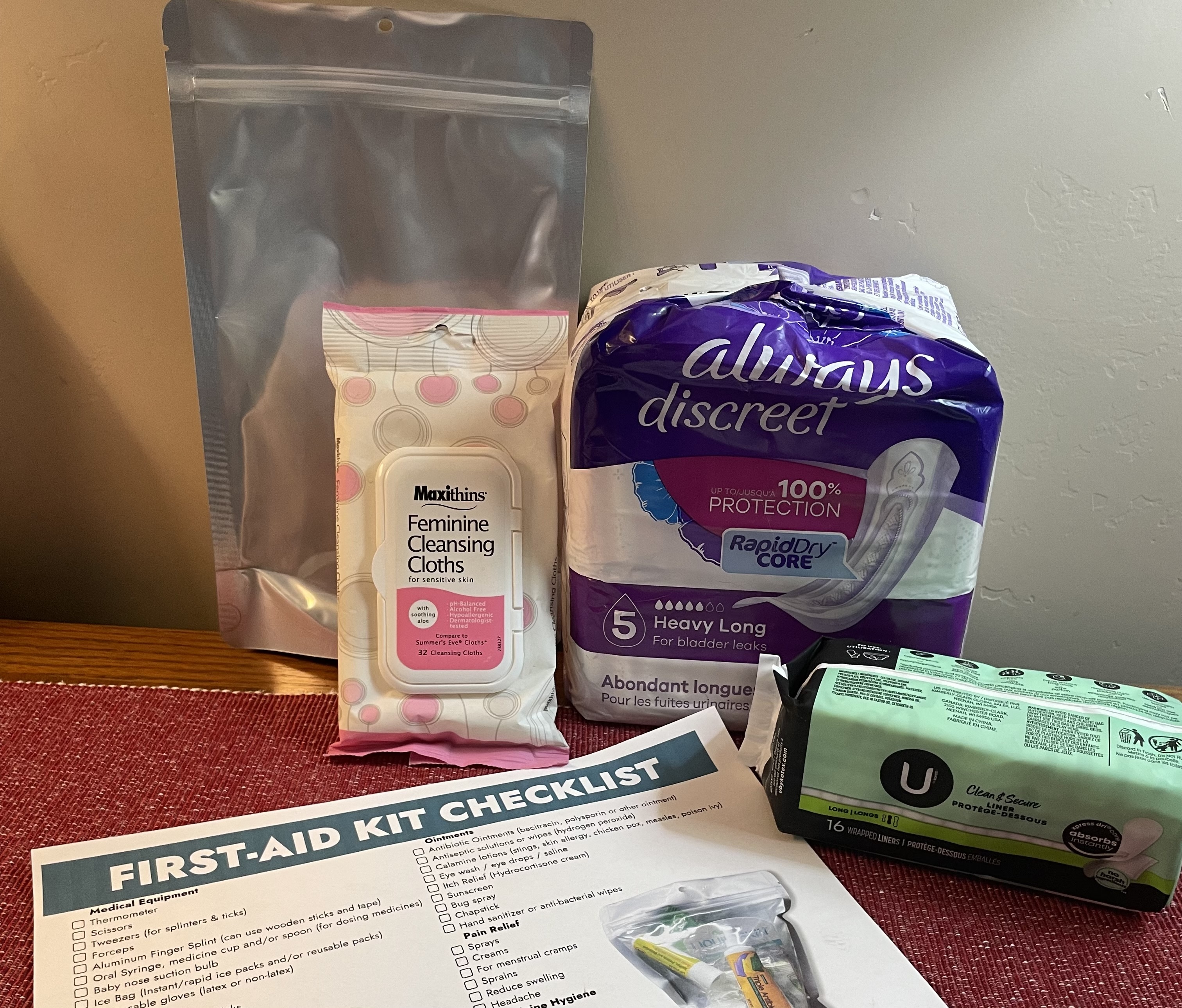
Personal care is an essential part of any well-stocked first aid kit. Having a variety of feminine hygiene products on hand ensures comfort and readiness for any situation. Be sure to include:
- Pads (in a variety of sizes and absorbencies)
- Tampons (multiple sizes for different needs)
- Feminine wipes (for freshness and sanitation)
- Bladder control pads (for light incontinence or postpartum needs)
Keeping these items well-stocked is important not just for emergencies, but for everyday preparedness.
Beyond the Basics: Extra First Aid & Hygiene Essentials
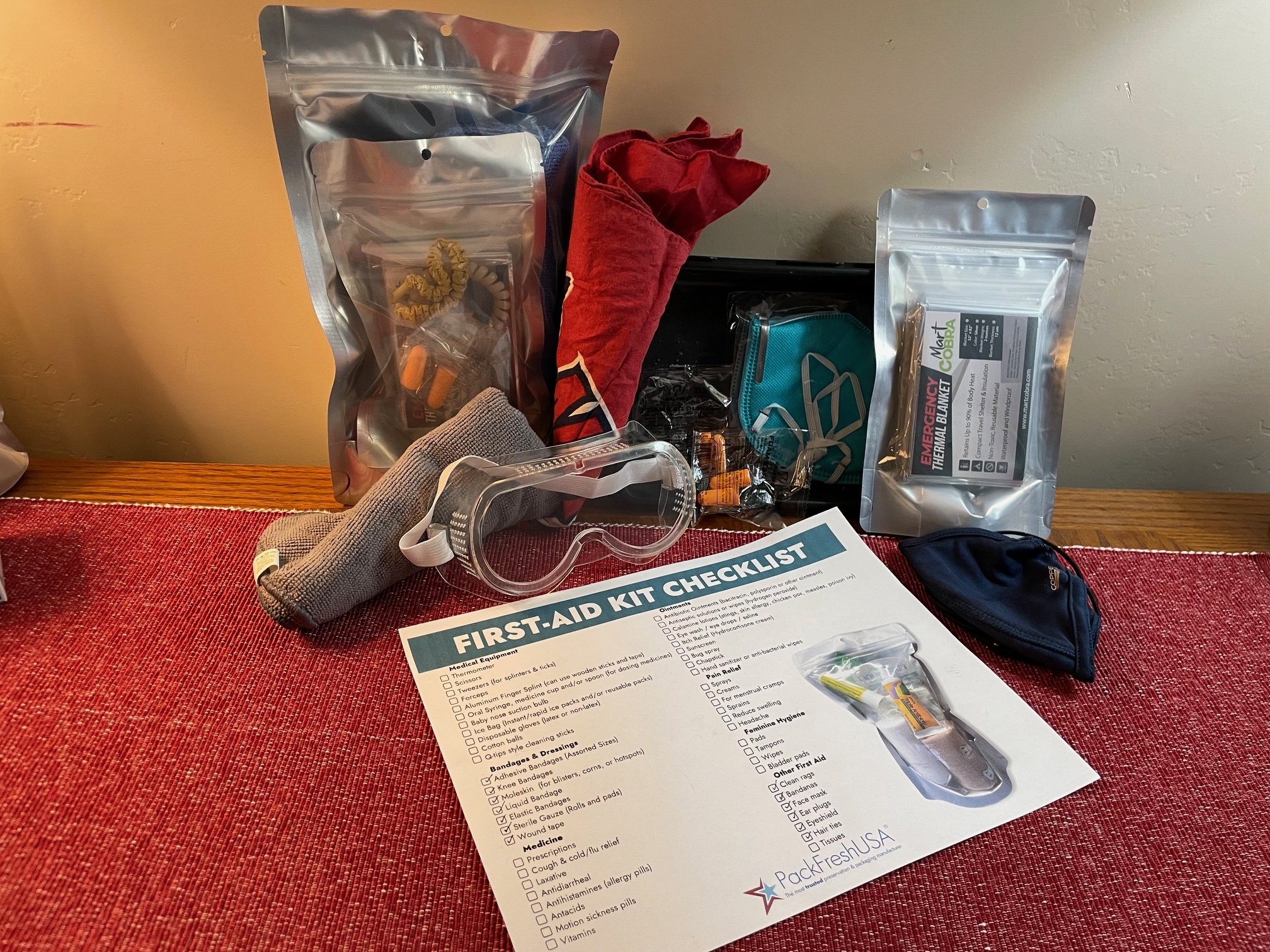
A well-rounded first aid kit includes more than just bandages and medication. Adding a few practical extras can make a big difference in managing emergencies, staying clean, and maintaining comfort. Consider including:
- Clean rags
- Bandanas
- Face masks
- Ear plugs
- Eyeshield
- Hair ties
- Tissues
- Emergency blanket
- Baby Wipes (I put mine in the baby first aid section)
- Soap bar
- Bleach* (small amount)
- Hydrogen Peroxide
- Rubbing Alcohol
- Soup (Dawn)
*Use caution when storing bleach—keep it sealed, labeled, and out of reach of children

Here is the link for our checklist SUP First-Aid Kit Checklist PackFreshUSA
BABY BAG ESSENTIALS (not on the list above)
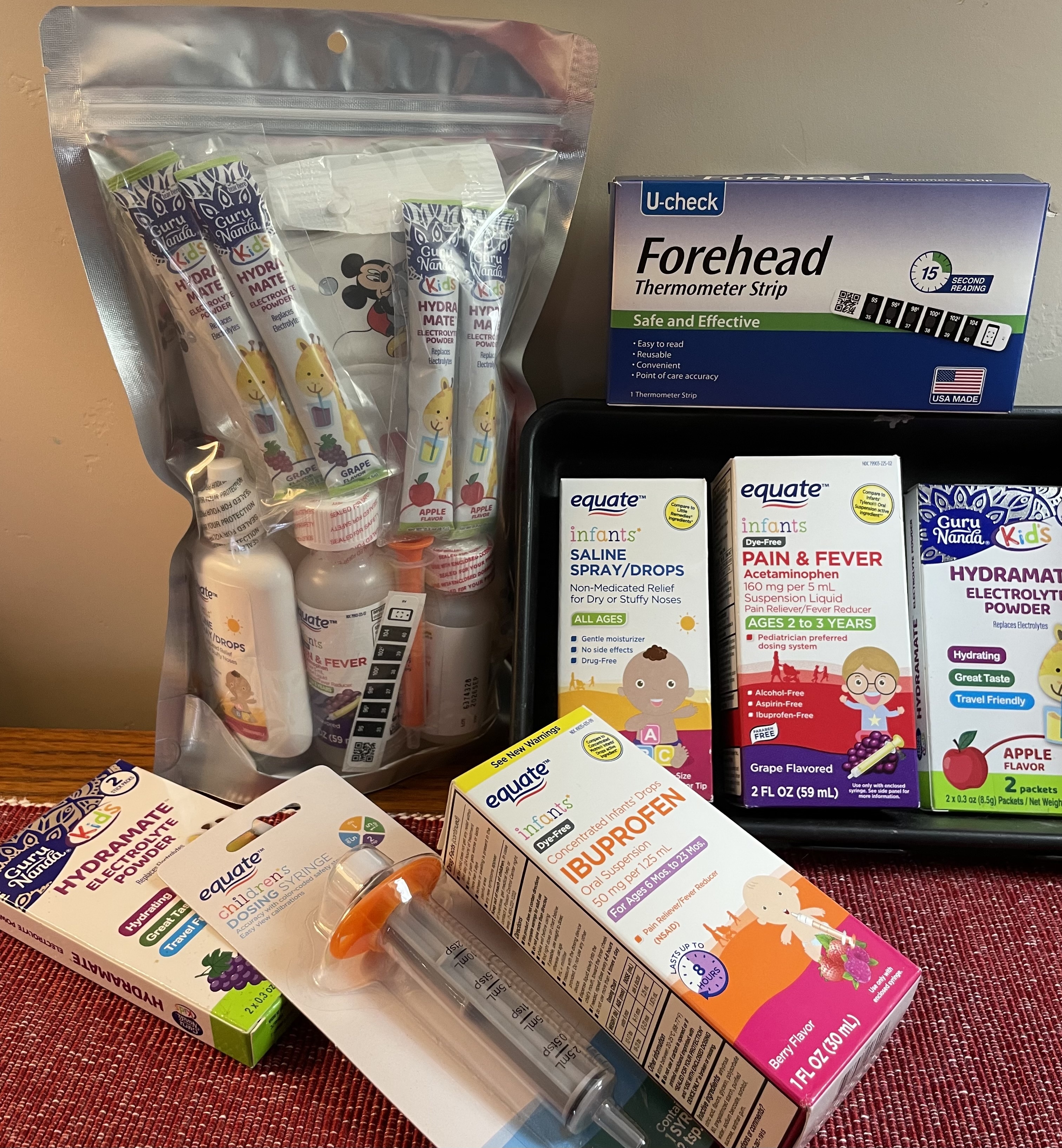
I also put together a dedicated first aid kit for my soon-to-arrive grandson. This way, I’ll have quick and easy access to baby-specific medicines and supplies without having to rummage through multiple packages. The stand-up pouches are perfect for keeping everything neatly organized and easy to grab when needed.
Baby Bag Items
- Baby/Infant acetaminophen (Tylenol)
- Baby/Infant ibuprofen (Motrin)
- Baby Saline Spray/drop
- Thermometer
- Medicine syringe or dosing dispensers
- Baby Wipes
- Pediatric electrolyte solutions (for hydration)
Nice-to-have Extra items:
- Nasal aspirator (aka a “nose sucker”)
- Choking (part of the Medical
Having these additional items on hand ensures you're ready for a wide range of situations, from first aid needs to sanitation challenges.
FIRST AID TIPS
Having some basic first aid stills to treat cuts and burns is a must. Nosebleeds happen quickly, especially with children. A scolding cut of tea or coffee can quickly become a burn. A gash on the head or arm, having the stills to use your first aid kit is a must. Please print these following tips on emergency tips to treat yoru loved ones, this is a just in case. Place these in your first aid box, for easy access. We always incourage people to take first aid classes which are offered by the Red Cross.
NOSEBLEED
Click the link: Nosebleed First Aid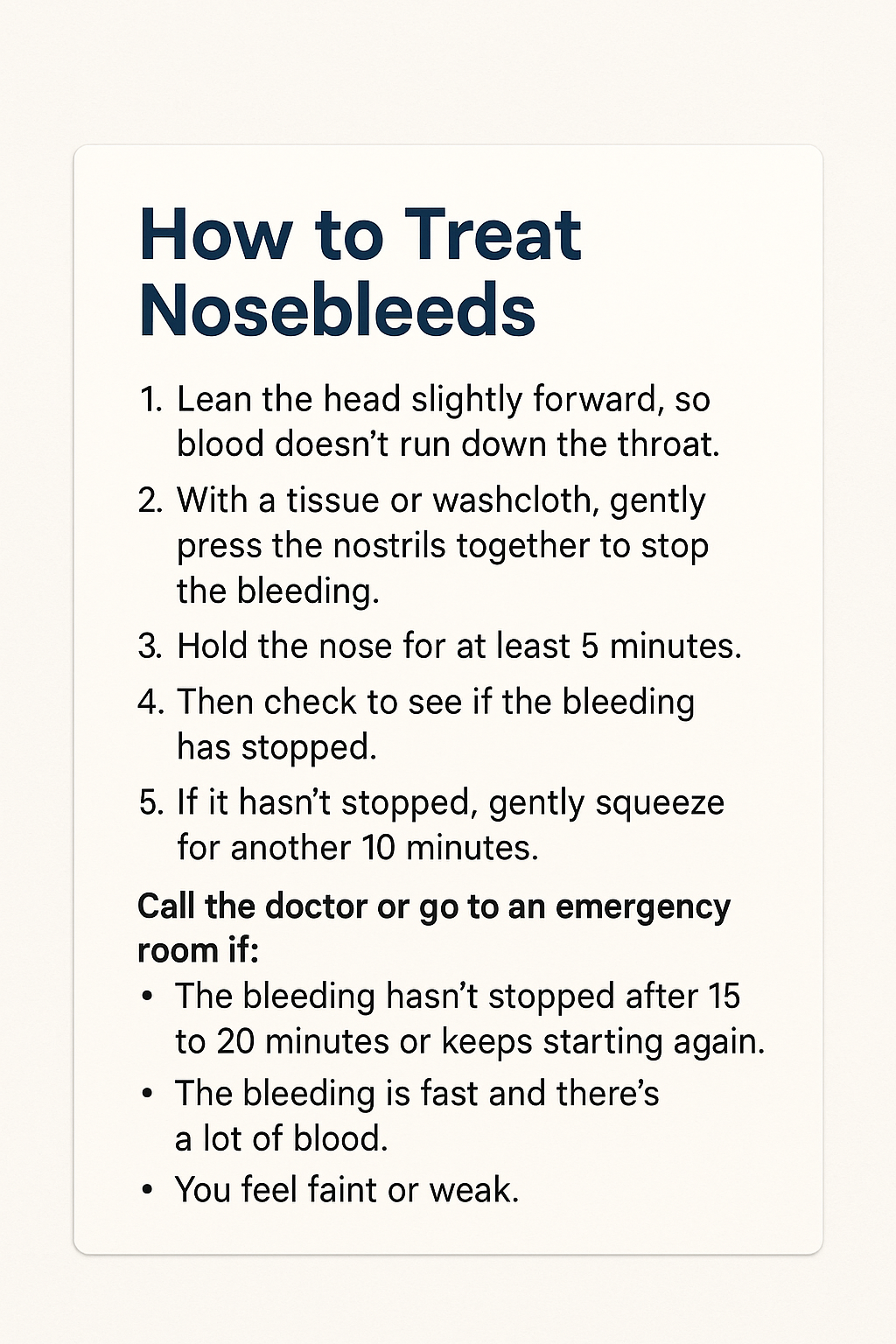
Here is the link for the PDF nosebleed first aid

TREATING BURNS
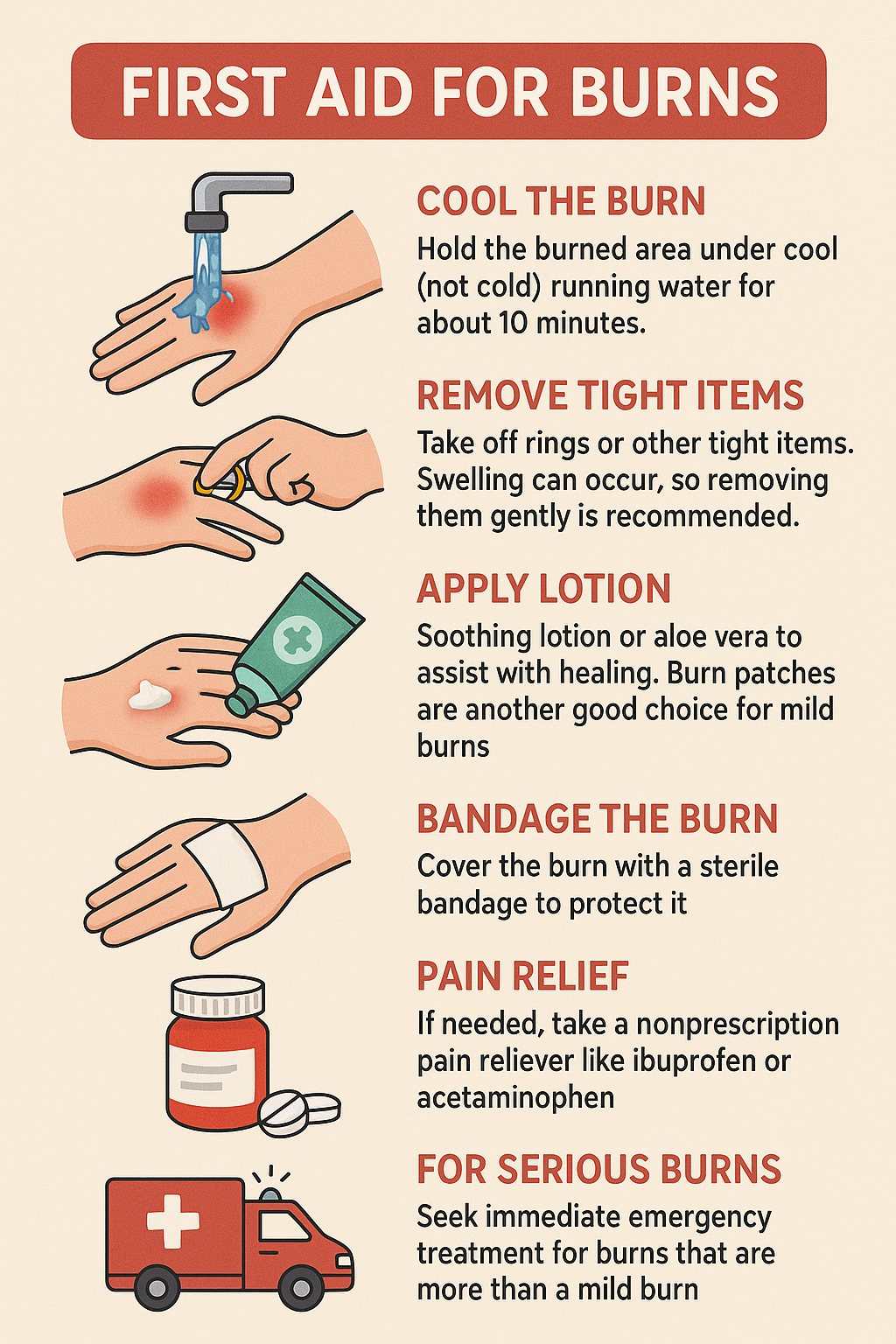
TREATING CUTS

In Conclusion:
No matter your stage of life—whether you're single, newly married, retired, or raising a busy family—a well-stocked first aid kit is essential. I keep a small kit in my car, one in our RV, another for off-roading, and, of course, a main kit at home. Having the basics on hand—like supplies for treating cuts, burns, and scrapes from bike or scooter mishaps—allows you to respond quickly and confidently. Be sure to check your stock annually, rotate out expired medications, and keep everything accessible. I also include a kit in our emergency grab-and-go bags for evacuation readiness.
Everyday is a good day to prepare,
Ola D Griffin
Long-term Food Storage Expert
Customer Service, Safeguard Brands, Inc. dba PackFreshUSA
YouTuber Pandemic Prepsters - YouTube
Instagram - Ola Dee Griffin (@Preparedness101) • Instagram Photos And Videos
Tiktok - Oladeegriffin (@Oladeegriffin) | TikTok
Phone: (844) 857-8277 |

